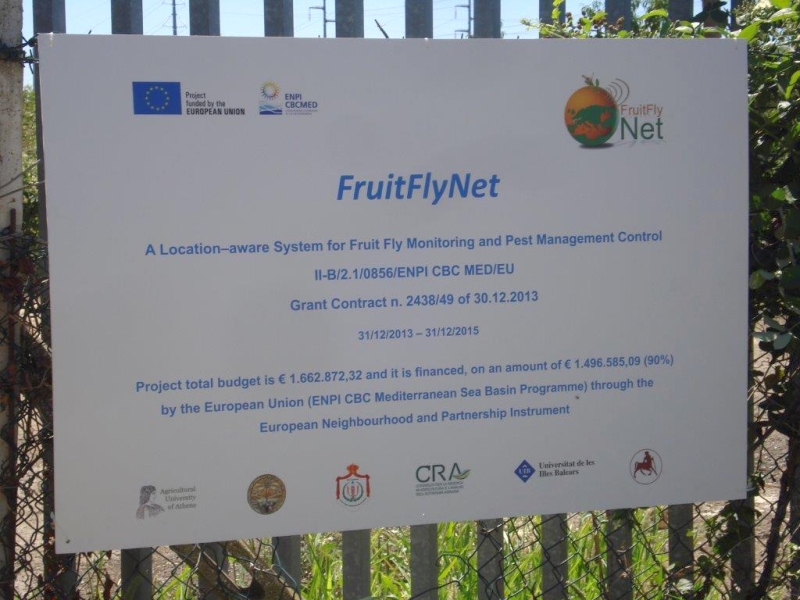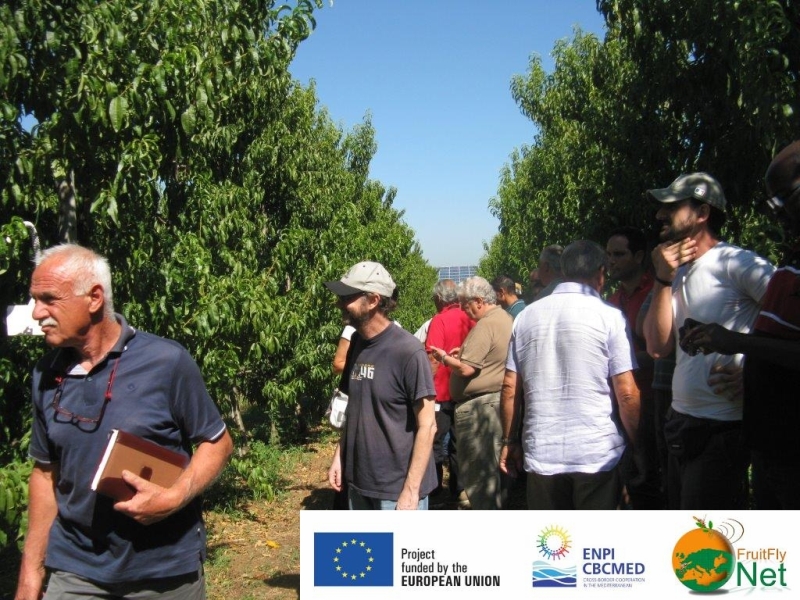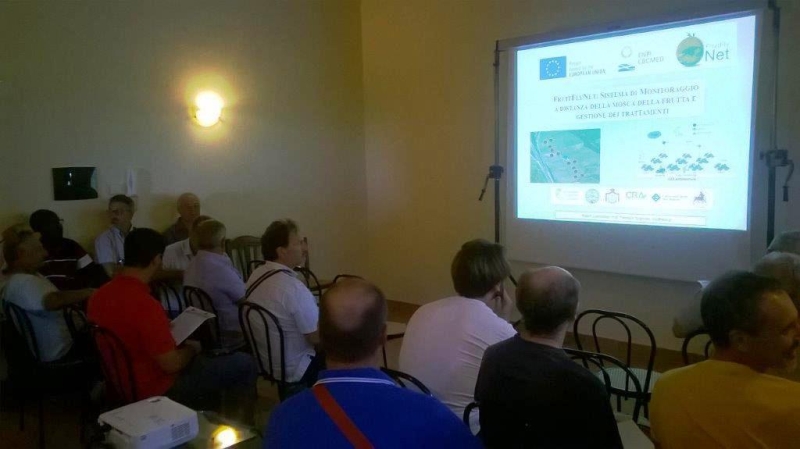On 29 july 2015 at the Farm Corcolle of Ernesto and Guido Verbesi, Via Polense Km 23.500 Corcolle (Rome) took place a “Training for Trainers” that were joined by 37 participants, including technicians, researchers and farms owners.
In the first part of Dr. M. Rosaria Tabilio, Coordinator for the Italian group (CREA - FRU), outlined the project, identifying the partners and all the different activities aimed at optimizing the management of the treatments for the control of Fruit Fly on different species (peach, olive, cherry and melon). In particular, the chance to perform remote monitoring for Ceratitis capitata on a peach orchard of 50 hectares (11 monitored by electronical traps and 11 by conventional traps), where 21 different varieties were cultivated, has been presented. Electronic traps equipped with internal camera were connected to the PDA "TRIMBLE JUNO" to transfer the information to the operator in order to optimize treatments.
During the second part, there were a field visit with some technical and computer engineer that showed the components of the modified trap and explained how it works.
SURVEY
All participants received a questionnaire to be filled in, in order to assess the research activities undertaken.
|
Tab. 1 Results of questionnaire. |
|
ANSWERS |
YES |
NO |
No Answer |
|
Is the operation of LAS clear? |
95 % |
0 % |
5% |
|
Is the fight method proposed interesting? |
100 % |
0 % |
0 % |
|
According to you, will it become applicable in the near future? |
95 % |
5 % |
0 % |
|
According to you, will that allow to obtain a reduction of the chemical treatments? |
90 % |
10 % |
0 % |
Furthermore in the questionnaire they were requested impressions and suggestions. The answers showed a great interest in the initiative especially referring to the opportunity to verify the presence of carpofago even without going on the field. It was also well understood that, through precise and prompt monitoring, you can get to intervene only when and where needed, thus achieving a real reduction in treatments with economic and environmental benefits. Several participants, however, has also highlighted the need for further training to be able to manage innovation independently. Furthermore the concerns about initial costs and those of maintenance have been highlighetd. Finally, others have suggested a further experimentation in order to give a greater objectivity to the results before of the application on a large scale.
For the traning presentations press here: presentation part A, presentation part B.






